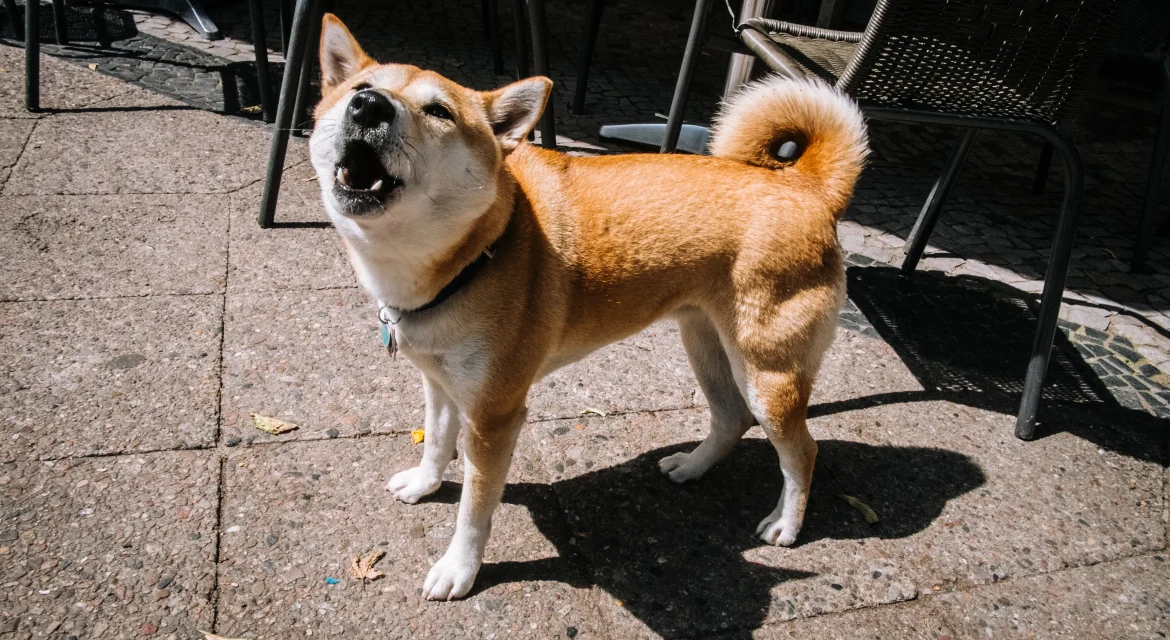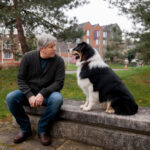Has your Shiba ever growled at a stranger, or suddenly ignored your call like you don’t exist?
If you’ve ever wondered whether your independent little fox is being aggressive or simply “being a Shiba,” you’re not alone. Shiba Inus are charming, bold, and incredibly loyal, but they also have a personality that is frequently misunderstood, particularly by new owners.
Let’s be clear: Shibas aren’t naturally aggressive towards humans, but they can be complex. Their behaviour is heavily influenced by how they are socialised, trained, and treated. What some refer to as “stubbornness” is often simply a sign that your Shiba requires a different communication style, and what appears to be aggression may actually be stress, fear, or simply a tested boundary.
In this guide, we’ll walk you through the real reasons Shibas may act out, how to spot the early warning signs before things escalate, and what you can do to raise a confident, well-balanced companion you truly understand.
Understanding the Shiba Inu Temperament
To address concerns about aggression, we must first understand what makes Shiba Inus unique. Originally bred as hunting dogs in Japan, Shibas inu possess several distinctive personality traits that, while endearing to many dog owners, can be misinterpreted as problematic behaviour.
Independence and Aloofness
Unlike golden retrievers, who eagerly seek human approval, Shibas often prefer to make their own decisions. They may appear standoffish with strangers and can be selective about when they want attention, even from their beloved family members. This independence shouldn’t be confused with aggression; it’s simply their nature. Socialising a dog early on can play a big role in helping your Shiba become more comfortable in different situations.
Strong Prey Drive
Shibas may become intensely focused on small animals, moving objects, or even children running around. This drive can manifest as chasing behavior that might seem a little aggressive but is actually instinctual.
Territorial and Resource Guarding Tendencies
These cat like dogs often develop strong attachments to their favorite sleeping spots, toys, food bowls, or even their human family members. They may become protective of these resources, which can escalate if not properly managed.
Shiba Scream
The infamous “Shiba Scream” is perhaps the most misunderstood behavior. This dramatic, high-pitched vocalization occurs when Shibas are overstimulated, frustrated, or simply don’t want to do something. While alarming to witness, it’s typically more theatrical than aggressive.
These natural traits, when combined with inadequate socialization and training or stressful environments, can contribute to behaviors that become aggressive but are often rooted in fear, confusion, or frustration rather than true aggression.
What Triggers Aggression in Shiba Inus?
Understanding what triggers aggressive Shiba Inu aggression is important for prevention. While every dog is individual, several common factors can contribute to problematic behaviors in this dog breed.
Fear and Anxiety
Shiba Inus who haven’t been properly socialized during their critical puppy period (roughly 3-14 weeks) may develop fear-based reactions to unfamiliar people, situations, or environments. Dogs with traumatic experiences may also exhibit defensive behaviors when they perceive threats.
Resource Guarding
This is particularly common in Shibas due to their independent nature. They may protect food, toys, sleeping areas, or family members, which can escalate if not addressed early.
Pain or Illness
Dogs cannot verbally communicate discomfort, so they may resort to defensive behaviours. Conditions like arthritis, dental pain, or internal discomfort can cause even the gentlest dog to become snappy.
Lack of Socialization
Lack of proper training and socialisation during puppyhood creates dogs who are unprepared to handle the complexities of human interaction. Shibas who haven’t learned that strangers, children, and new experiences are normal parts of life may react defensively when faced with unfamiliar situations.
Insufficient Exercise and Mental Stimulation
Shibas are intelligent, active dogs who need both physical outlets and mental challenges. Bored or under-stimulated dogs may redirect their energy into problematic behaviors, including aggression.
Inconsistent Training and Boundaries
Inconsistent Training and Boundaries confuse dogs and can lead to testing behaviors. Shibas are particularly sensitive to mixed messages and may push boundaries when rules aren’t consistently enforced.
Rough Handling or Invasive Personal Space
Shibas generally don’t enjoy being hugged, grabbed, or forced into interactions. Children who haven’t learned to respect a dog’s personal space may inadvertently provoke defensive reactions.
Signs to Watch For: Recognizing Aggressive Behavior
Recognizing the early signs of stress and discomfort in your Shiba Inu is essential for preventing escalation to Shiba Inu’s aggressive behavior. Dogs rarely bite without warning; they typically display a progression of increasingly obvious signals before resorting to their teeth.
Subtle Signs of Discomfort and Stress
The earliest indicators of stress in Shiba Inus are often subtle and easy to miss, especially for first-time owners. These behaviours are your dog’s way of politely saying, “I’m not comfortable with this.” Recognising them early can help prevent stress from escalating into aggression.
Here are common subtle stress signals to watch for:
- Yawning when not tired
- Lip licking without food present
- Turning their head or body away from a person, object, or situation
- Body stiffness (a relaxed Shiba moves fluidly; a tense one appears rigid)
- Whale eye (the whites of their eyes become visible as they turn their head, but keep their gaze fixed)
- Ears pinned back against the head
- Tail tucked or stiff instead of relaxed and curled
- Trying to hide behind furniture, under tables, or behind their owner
Each of these is a low-level signal that your Shiba Inu is overwhelmed, anxious, or unsure. The best thing you can do? Give them space, remove the stressor if possible, and avoid forcing interactions.
Respecting these early signs not only builds trust, but it can also stop discomfort from escalating into defensive behaviours like growling, snapping, or biting.
Clear Warning Signs (Escalation)
When subtle signals are ignored or misunderstood, Shiba Inus will escalate to more obvious warning signs.
- Growling is perhaps the most important warning sign to understand correctly. Many shiba inu owners make the mistake of punishing growling, but this removes your dog’s way of communicating discomfort and can lead to a dog who bites without warning. Instead of viewing growling as valuable information, your dog is telling you they’re uncomfortable and need help managing the situation.
- Snapping or air bites represent your dog’s attempt to create distance without making contact. This is still a warning, though a more serious one.
- Baring teeth, stiff body language with a hard stare, and lunging (whether on or off leash) are clear indications that your Shiba is prepared to defend itself if necessary.
- Hard nips or mouthing that leave marks or cause discomfort should be taken seriously, even if they don’t break skin. This behavior often precedes actual biting and requires immediate professional intervention.
- Biting represents the most serious form of aggressive behavior and typically occurs only after other warning signs have been ignored or when a dog feels they have no other options. Any bite, regardless of severity, should be addressed with the help of a qualified professional.
Are Shiba Inus prone to biting?
While not inherently prone to biting, Shibas may bite if their warning signs are consistently ignored or if they feel cornered. Biting represents the most serious behavioral concern and typically occurs only after other warnings have been dismissed. Any bite should be addressed with professional help.
How to Manage and Prevent Aggression?
The good news is that with proper management, training, and understanding, aggressive behaviors in Shiba Inu breeds can be prevented and addressed effectively. Success requires commitment, consistency, and often professional guidance, but the vast majority of behavioral issues can be resolved or significantly improved.
Early and Ongoing Socialization
The socialization period occurs roughly between 3-14 weeks of age, making puppy selection and early experiences crucial. Enroll in puppy socialization classes led by qualified trainers who understand positive reinforcement methods. Expose your Shiba to a variety of people, ages, ethnicities, clothing styles, and mobility aids in positive, controlled situations.
Remember that socialization isn’t just for puppies; adult Shibas benefit from continued positive experiences throughout their lives. The key is ensuring these experiences are pleasant and never forced or overwhelming.
Consistent Positive Reinforcement Training
Start training as early as possible, but remember it’s never too late to begin. Focus on rewarding good behavior rather than punishing unwanted behavior. Shibas respond particularly well to high-value treats, praise, and play as rewards.
Essential commands for managing potential aggression include “leave it,” “drop it,” “wait,” and a strong recall. These commands give you tools to redirect your dog’s attention and prevent problematic situations from escalating. Patience is crucial, Shibas are intelligent but independent, and they need to understand what’s in it for them.
Respecting Their Space
Create “safe zones” in your home where your Shiba can retreat when they need alone time. Teach family members, especially children, to recognize when the dog needs space and how to interact appropriately.
Handle your Shiba gently and with purpose; avoid unnecessary grabbing, hugging, or restraining. Train your dog to enjoy handling by pairing gentle touches with treats and praise, making it a positive experience rather than something to endure.
Managing Resources Carefully
It helps prevent guarding behaviors from developing or escalating. Feed your Shiba in a quiet location where they won’t be disturbed. If resource guarding is already present, practice the “trade-up” technique, offering something of higher value in exchange for the guarded item, teaching your dog that giving up resources results in good things happening.
Never try to forcibly remove items from a resource-guarding dog, as this typically escalates the behavior and can result in bites.
Providing Ample Physical and Mental Stimulation
Shibas need daily exercise appropriate to their age and health status, but mental stimulation is equally important. Puzzle toys, training sessions, nose work, and interactive games help tire your dog’s mind and reduce the likelihood of behavioral problems stemming from boredom or excess energy.
- Regular Veterinary Check-ups ensure that sudden changes in behavior aren’t rooted in physical discomfort or illness. Be particularly vigilant about behavioral changes in senior dogs, as age-related conditions can cause pain that manifests as aggression.
- Seeking Professional Help should be viewed as a sign of responsible ownership, not failure. If you’re seeing persistent signs of stress, fear, or aggressive behavior, consult with a certified dog trainer who uses positive reinforcement methods or a veterinary behaviorist. These professionals can help you develop a customized behavior modification plan and provide hands-on guidance.
Look for trainers certified by organizations such as the Certification Council for Professional Dog Trainers (CCPDT) or the Association of Professional Dog Trainers (APDT). For severe cases, veterinary behaviorists can prescribe anti-anxiety medications in conjunction with behavior modification if necessary.
Conclusion
Shiba Inus are not inherently aggressive dogs, but their unique temperament and independent nature require thoughtful, informed ownership. With proper socialization, consistent positive training, and respect for their personalities, Shibas make loyal, devoted companions who rarely exhibit problematic behaviors toward humans.
The key lies in understanding your dog’s communication, recognizing early signs of stress or discomfort, and addressing issues promptly with appropriate management strategies. Remember that every dog is an individual, while breed tendencies provide useful guidelines, your Shiba’s personality, experiences, and environment all play crucial roles in shaping their behavior.
Most importantly, don’t hesitate to seek professional help if you’re concerned about your dog’s behavior. Early intervention is always more effective than trying to address entrenched behavioral patterns, and there’s no shame in wanting the best possible relationship with your four-legged family member.
Ready to dive deeper into Shiba Inu ownership? For more breed-specific training tips and insights, subscribe to our newsletter and never miss an update that could help you and your Shiba grow together.




